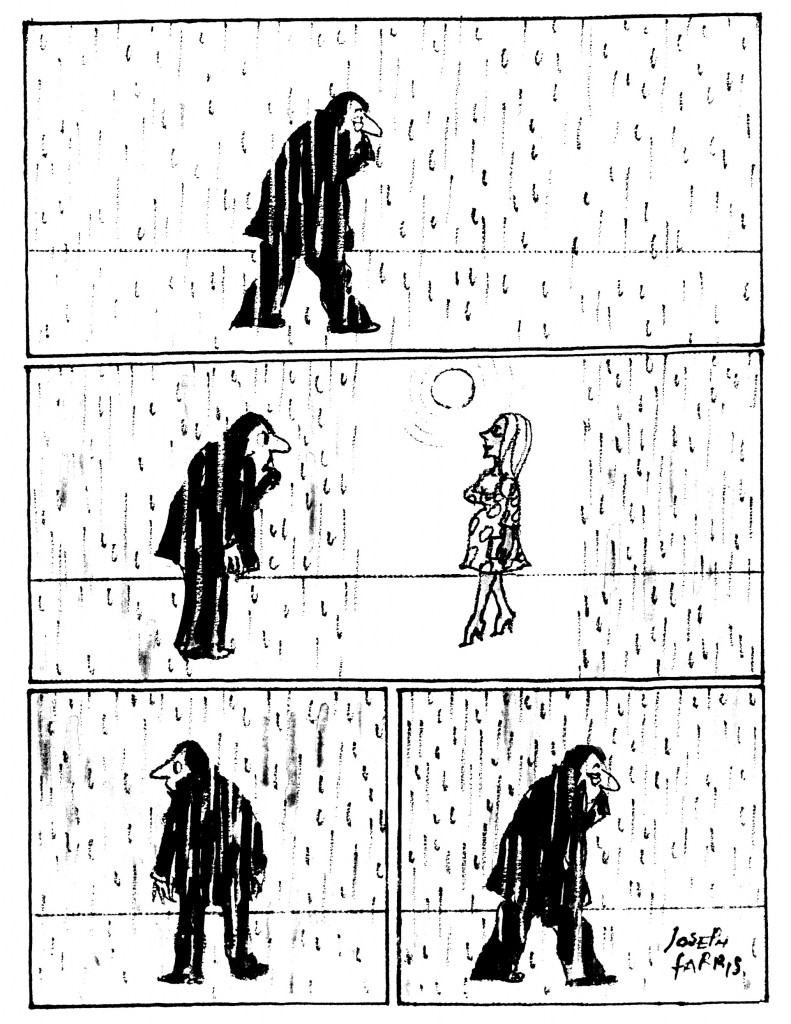Vaginal Atrophy: Is there an effective non-hormonal option?
While the GLAM squad works to convince you that the only sensible option to treat vaginal atrophy is Novo Nordisk’s Vagifem (a topical estrogen agent), I would like to share that a highly effective non-hormonal option exists. The rub? It’s only available in Europe and Canada. The thing is, I have tried it and while I may be an n of 1 in scientific circles, I want to share that it’s pretty darn amazing.
Before I do the reveal, I would like to get a bit personal and share my story. After years of experiencing no issues with vaginal dryness or pain during intercourse, the tables turned this past Summer. And so, I did the most sensible thing that I could do (short of reading Flashfree!); I made an appointment with my gynecologist. And after a thorough examination and a few tests for infections, she recommended that I try Estrace, another topical estrogen in the same category as Vagifem.
If you are a long time reader of Flashfree, you are well aware of how I personally feel about hormones. However, what I’ve not shared on this blog is that I have always had an extreme sensitivity to hormones, a sensitivity that I discovered in my early 20s when I started using the pill. That, coupled with the fact that my mother had breast cancer at an extremely early age made me wary of any type of hormone. And years later, when I started this blog and read all the data I could get my hands on, I was convinced that hormones were not a good route, regardless of their efficacy in addressing menopausal symptoms. Yet, regrettably I chanced it…again.
I want to emphasize that my experience is only mine and is not necessarily reflective of others’. However, within a month of using Estrace, I gained 6 pounds, was bloated, developed severe acne, had daily headaches, and experienced significant and irrational irritability. But damn, my vaginal tissues were once again moist.
Not. Good. Enough.
And so, I started researching my options. And stumbled across Gynatrof. 
Gynatrof gel is a natural topical agent comprised of microscopic beads (known as liposomes) are formulated to act as both a lubricant and a moisturizer. This technology helps to insure that the vaginal tissues remain moist between applications, and additionally, boosts hydration and elasticity. The gel contains several ingredients:
- Hyaluronic acid, a type of molecule found abundantly throughout the body’s connective tissue, the skin and the nervous tissues. Hyaluronic acid has the ability to store large quantities of water, thereby forming a natural, moisturizing liquid film when applied topically. More specifically, it helps to protect the vaginal skin from irritation and redness, itching and burning; enhances natural lubrication and may even help to aid healing of irritated vaginal tissue.
- Hops plant extract, which has weak estrogenic effects and may help promote lubrication and elasticity. Hops have also been shown to possess antibacterial properties and are sometimes used for leg ulcers.
- Vitamin E, which the manufacturer says reduces inflammation and prevents aging of the vaginal area. If anything, vitamin E is believed to be an antioxidant that may help prevent or treat disease. It has also been used for centuries to treat the skin and has been shown to penetrate both the outer and next layer of the skin (epidermis, dermis, respectively).
Available in Europe since 2006, Gynatrof has proven safe and there have been no reports of estrogen-related sensitivity. It is also non-toxic should it be accidentally ingested.
My personal experience? I have been using Gynatrof for a month now. And I have had stellar results – no side effects, no sensitivity and no issues during intercourse.
As someone who regularly colors outside the lines, it’s no surprise that I was able to obtain Gynatrof. But more importantly, when I contacted a local compounding pharmacy to see if they could obtain it for me, they called back after several hours to inform me that they could not.
This is an OTC product in both Europe and in Canada. It has been on the market for eight years now. And yet, we do not have access to it in this country. Moreover, it works, at least for me. And it is a safe option for women who either cannot tolerate hormones or choose not to use them.
Anyone interested in starting a petition? I cannot endorse this product enough.
[Disclosure: I neither contacted the manufacturer or its representatives nor did either contact me to review Gynatrof. It worked so well for me that I wanted to share it with my readers]
Read More
Vaginal atrophy: an alternative to hormones
I have been a bit disturbed by the surge of attention in the menopause space to vaginal atrophy, i.e. thinning and drying of the lining of the vagina. Mind you, I don’t feel that impact that vaginal atrophy can have on a woman’s life should be marginalized, however, when I see my colleagues racing to write about hormones and ending the silent suffering of tens of thousands of women, all I can do is shake my head in disbelief; you see, my space is not for sale to any bidders. Let me be clear: vaginal atrophy affects roughly 43% of women during menopause and can lead to extreme discomfort, dryness, burning, itching, pain and lack of sexual desire. Since most women spend about a third of their lives in postmenopause, this can be a huge issue and one that warrants attention. However, to represent vaginal atrophy as an epidemic of epic and burgeoning proportions is simply irresponsible.
As I step off my soapbox, let me share the true reason for this post: Finnish researchers have discovered a potential treatment for vaginal atrophy for women who cannot use or choose to forgo systemic or topical estrogen therapy — sea buckthorn oil. Sea buckthorn oil is derived from the fruit of deciduous shrubs and has long been used in Central Asia to treat inflamed genital organs and uteri. When it is ingested, it has been shown in clinical studies to positively affect blood fats, dry eye, the aggregation of platelets that can cause heart disease and even reduce system-wide inflammation. Woo-woo? Hardly; my point is that sea buckthorn oil has been studied in scientifically-sound, clinical trials.
In a study published online in the journal Maturitas, 116 women were asked to take sea buckthorn oil (3 capsules, or 3 gm daily) or placebo for three months. Vaginal mucous membranes were examined both at the beginning of the trial and at the end and were analyzed for elasticity, integrity, moisture and fluid. The women were asked to score the severity of their symptoms — vaginal dryness, burning and itching — at the beginning, middle and end of the trial and also and also kept diaries on other menopausal symptoms.
Sea buckthorn oil was shown to significantly improve the integrity of the vaginal lining by about 50% compared to placebo; women taking the oil trended toward increases in their vaginal health index, which was a composite of all vaginal atrophy symptom scores (i.e. elasticity, integrity, moisture, fluid and pH). Sea buckthorn oil also appeared to decrease night sweats but did not appear to benefit other menopausal symptoms. Moreover, while the women taking the oil experienced improvements in their vaginal symptoms from the start to the end of the study, the difference compared to placebo was not significant enough to demonstrate the lack of a placebo effect and clearly, more research is needed. Another important finding was the lack of effect on cell types, which indicates that sea buckthorn oil does not have an estrogen effect. Finally, common side effects, which affected both groups about equally, included GI symptoms. Because sea buckthorn oil may slow clotting, it is not recommended that it be taken along with other agents that likewise, affect clotting, such as aspirin, ibuprofen and warfarin.
It is unclear whether or not topical use of sea buckthorn oil might provide greater comfort without some of the GI side effects. A quick search shows that it is readily available online and depending on the formulation, retails for anywhere from $12 to $30. As always, use caution and speak to a knowledgeable practitioner before starting any regimen with sea buckthorn oil. Most importantly, it is nice to know that researchers continue to explore avenues other than hormones for common conditions like vaginal atrophy.
Read More
Wednesday Bubble: How Dry Am I? How Dry Are You?
Puzzle me this:
What do vaginal dryness and technology have in common?
Evidently, the folks at RuJuVey want your help in finding out. But first, let’s talk about the issue of vaginal dryness. Vaginal dryness is a characteristic of vaginal atrophy — a thinning of the vaginal tissue that results as estrogen declines. It affects as many as half of all women as they go through menopause and although vaginal atrophy can occur during anytime in a woman’s life, it’s prevalence does increase with aging. And so do the accompanying symptoms of dryness, pain during intercourse, irritation, post-intercourse bleeding and of course, a decline in sexual desire and functioning as a result. While topical estrogen is certainly an option and prescribed by many clinicians for this problem, it’s always nice to have non-prescription alternatives that work just as well.
That’s where RuJuVey theoretically enters the picture.
Admittedly, I don’t know very much about RuJuVey; from what I understand, the company is working on a device that uses sonic technology to deliver a non-hormone emollient. And, while the product is in development, they are seeking your assistance, via a short, online survey, to try to learn more about vaginal dryness and the percentage of women who suffer from it as a result of aging. In addition to participating in the survey, you may also be considered for participation in a test group.
Mind you, I’m curious about the device, although I’m not quite sure that I can get my ‘legs’ around (!) what I assume will be a tampon-like device that requires insertion to help turn on the juices again. Then again, that’s simply an assumption.
If you are interested, I’d encourage you to click on the link above and take the survey. I did and it’s a painless way to participate in innovation. And when it comes to menopause, I’m all about innovating.
Who knows? It might be the sunny side of Menopause Lane!
[Disclosure: While I was approached by ReJuVey to share their survey, they did not contribute ideas for this post nor was I paid by the company.]
Read More







